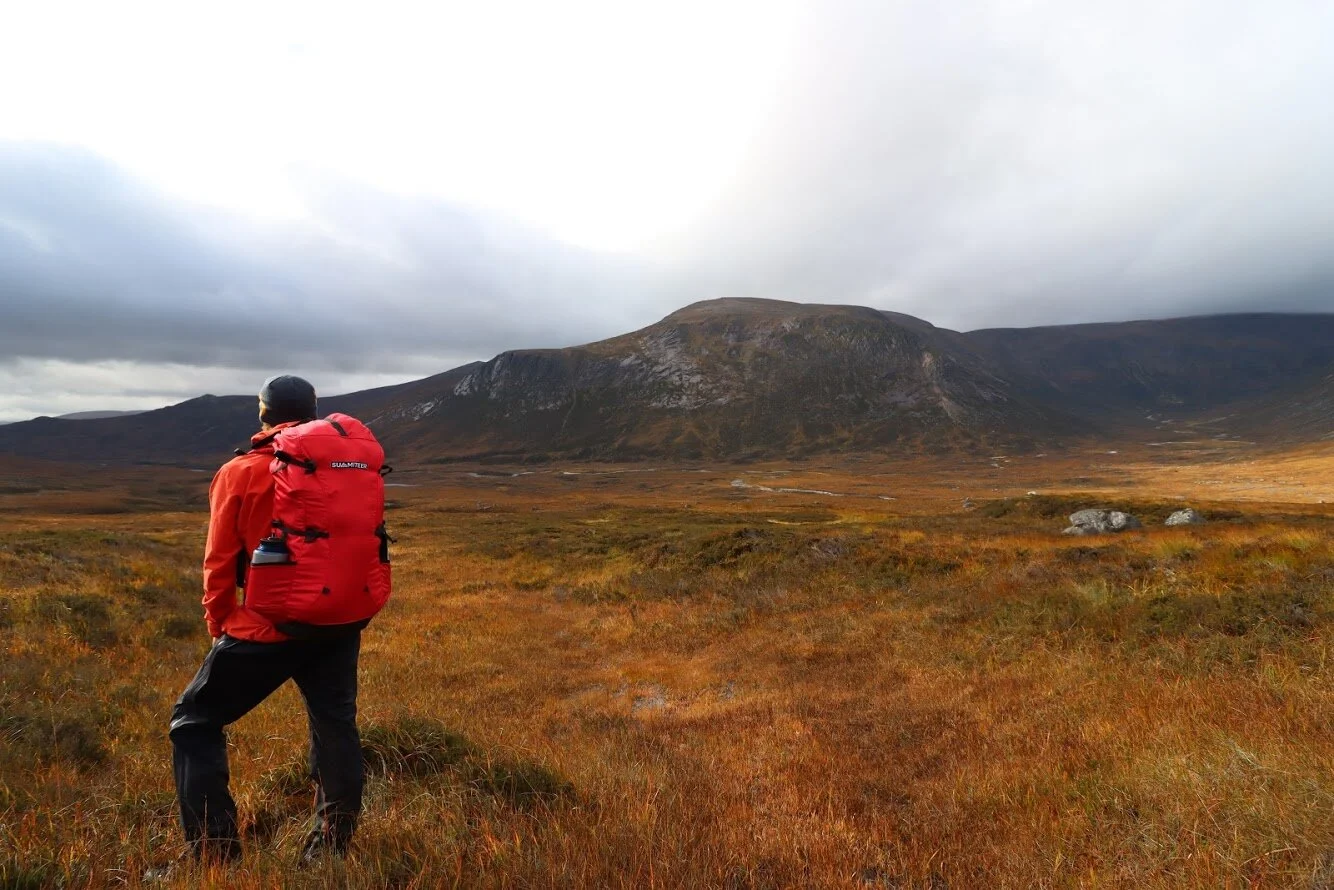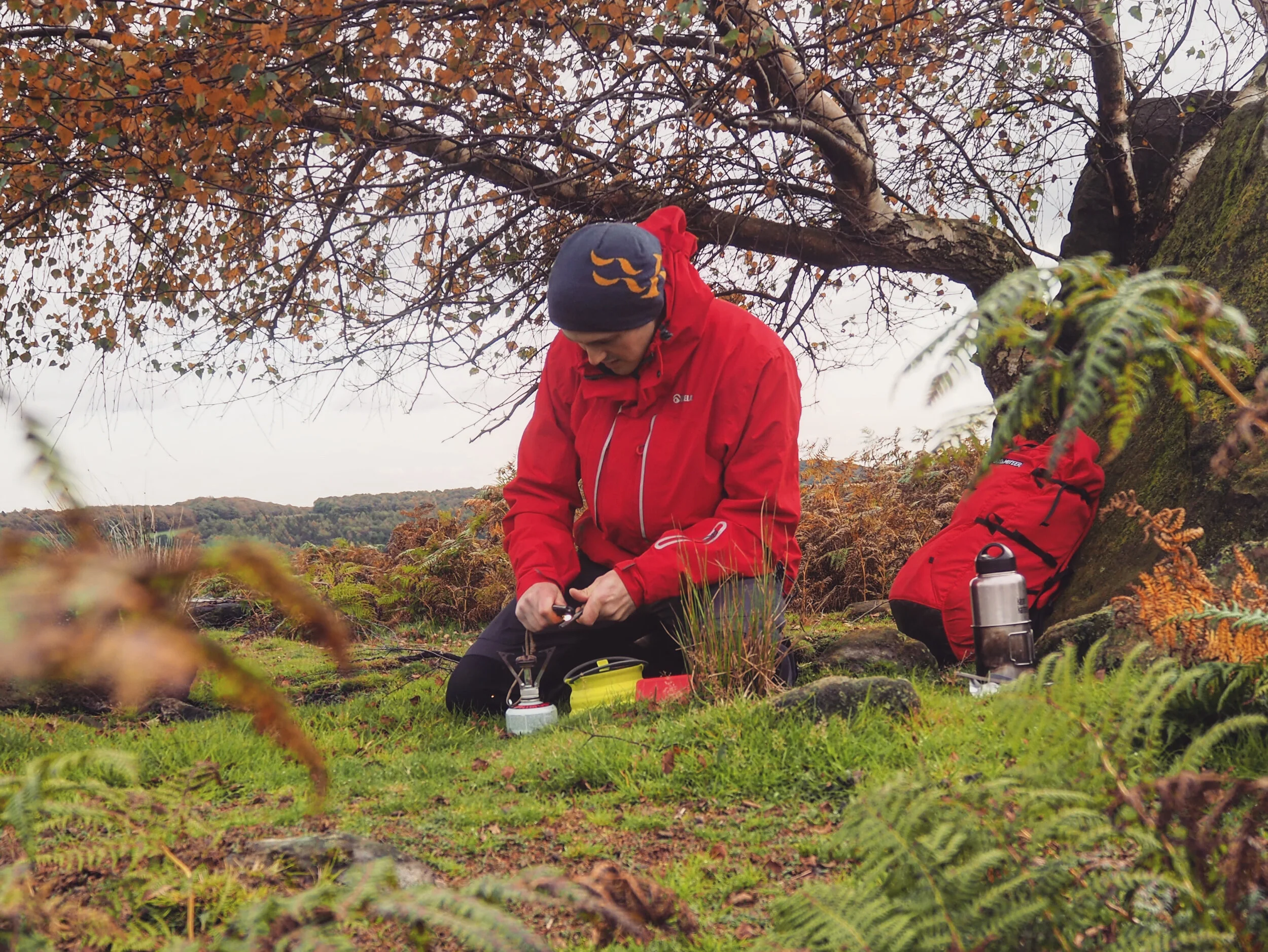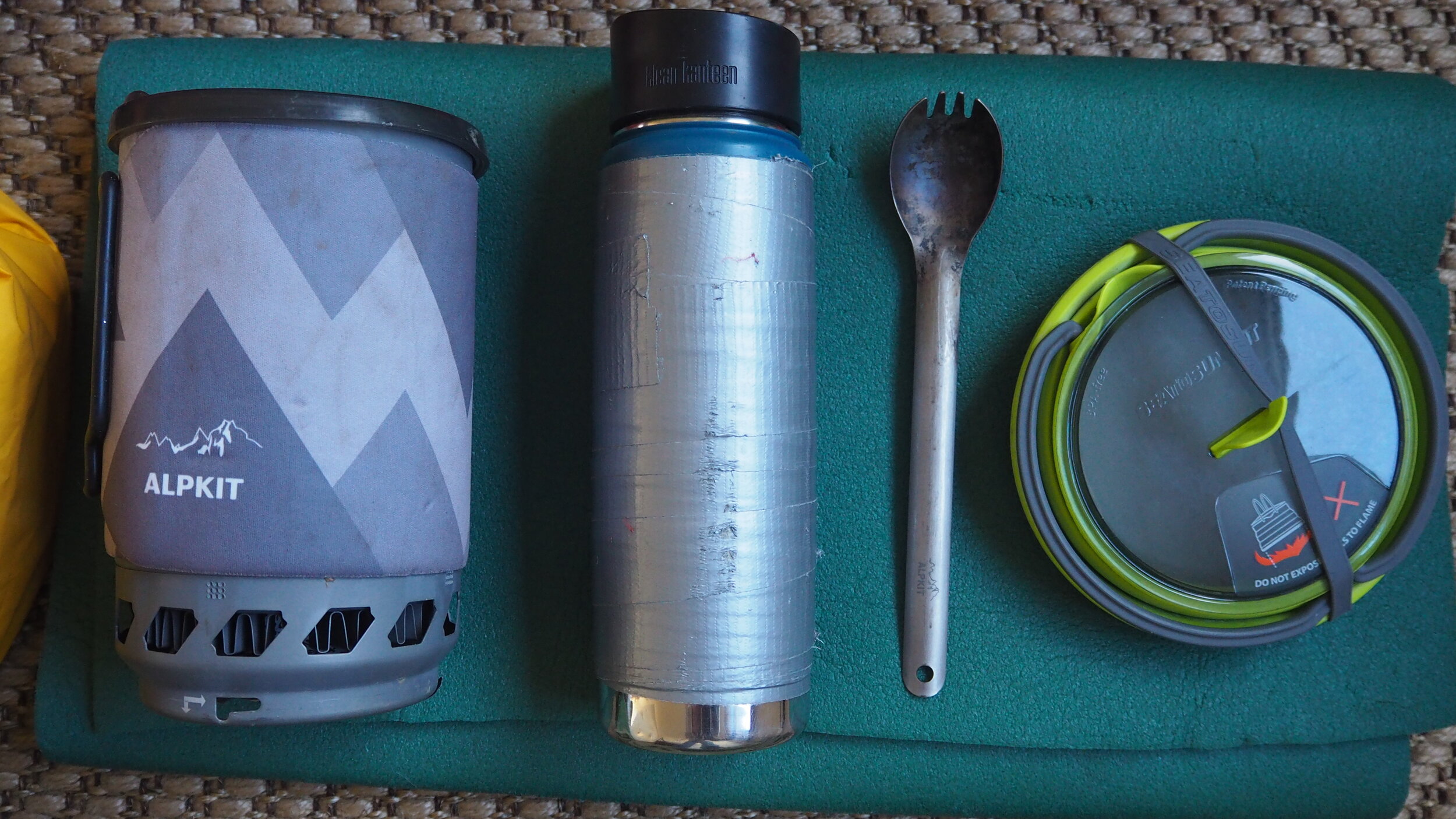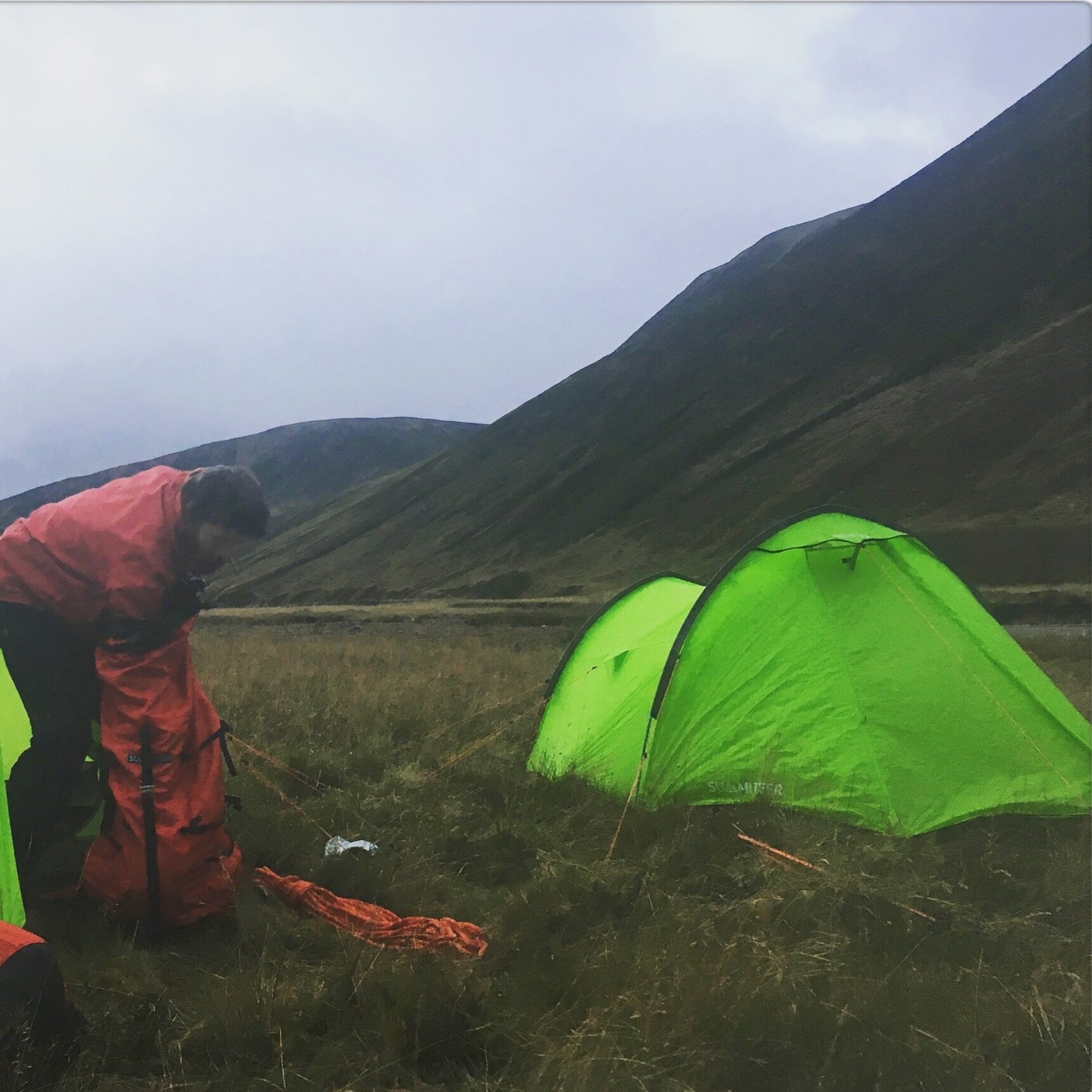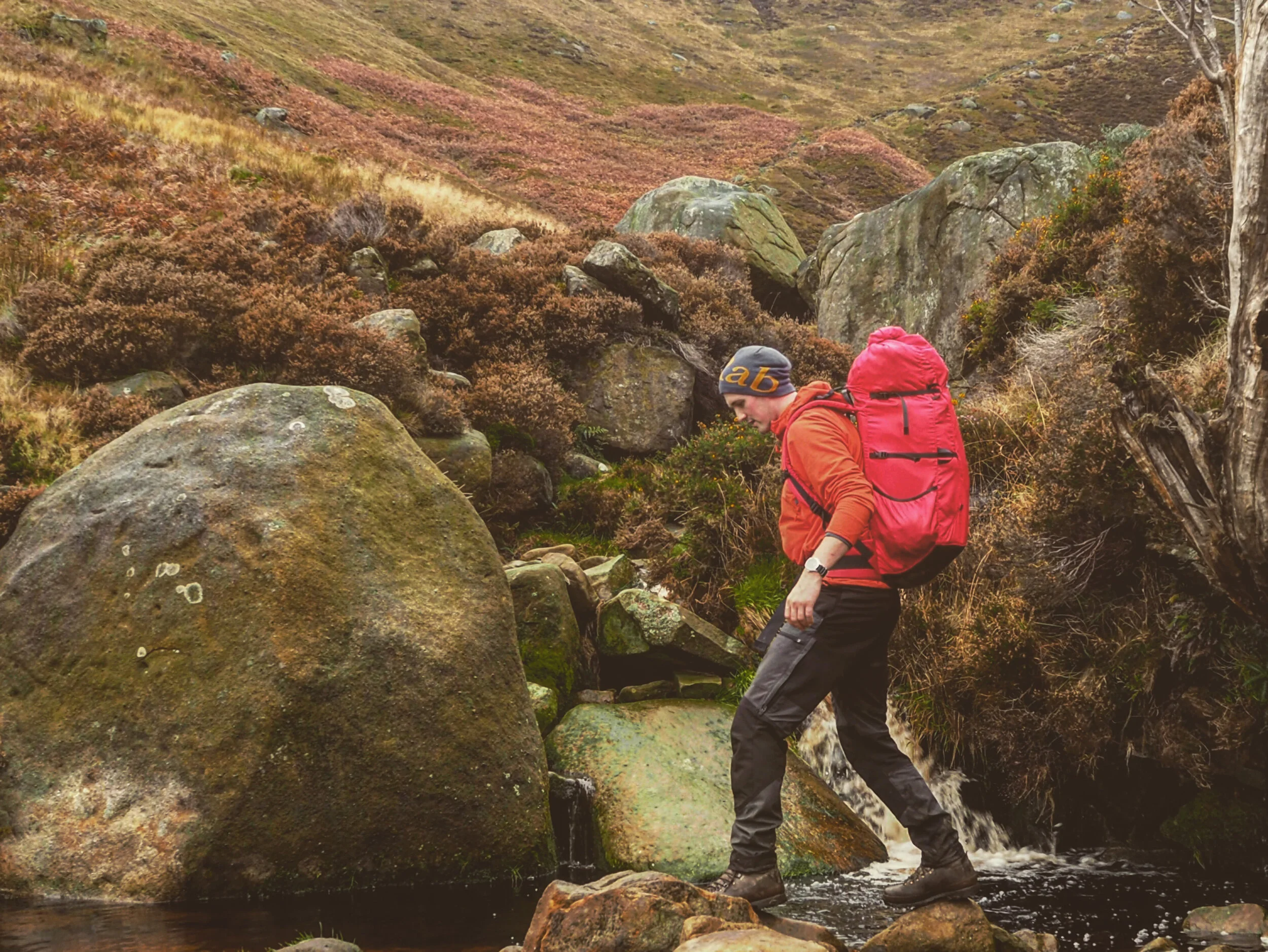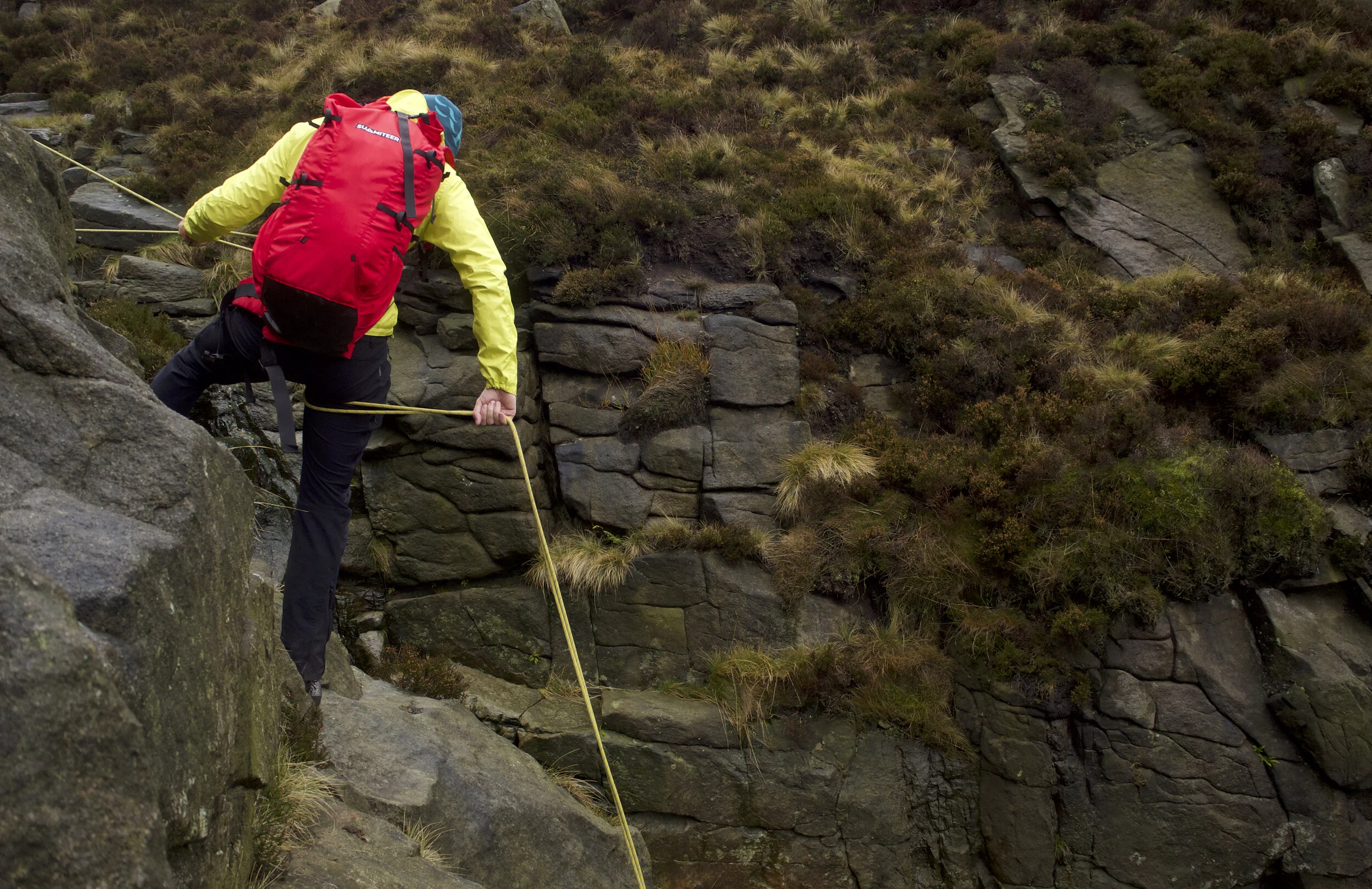Mountain Equipment: The Longest Line
Jamie Dakota
In October 2019 we made the bold attempt to cross the Cairngorms national park in a straight line, follow a route plotted by the Ordnance Survey to be the longest straight in the UK unbroken by a road. You can read about this attempt in The Bushcraft Journal Magazine issue 28, or an abridged version can be found here.
We’ve had some interest in the equipment we used for such a mobile expedition over challenging terrain, and with some of our kit being so generously provided to us my a few excellent companies, I thought I’d quickly lay out what we took with us and how it performed.
The Gear I carried:
A. Summiteer Elephant Pack
B. Mapping gear
C. Anker battery pack and spares for head torch
D. Olight Nova HR1 headtorch
E. Laplander saw
F. Survival Bivi
G. First aid kit for the group
H. Osprey drybag to line the pack
I. Food- Firepot meals for the most part
J. Sleeping kit and toiletries
K. Cooking kit and flask
L. Half a roll matt
M. Rope for climbing, abseils etc.
N. Trekking Pole (I started with 2!)
The Clothing I wore:
Keela Stratus SDP Jacket
Rab Zenon Gloves
Rab fleece lined beanie
Rab Shadow Hoody
Saxx hiking underpants
Isobaa merino tee
Pinewood Caribou pants
Swazi Ali-gaters
Sealskinz Merino lined waterproof socks mid-length
Hestra climbing gloves (for the abseiling)
Decathlon waterproof shell mitts
Alpkit Parallax waterproof trousers
Altberg army surplus boots
Rab Blizzard Mitts (if the weather got seriously cold)
Spare merino hat, buffs, gloves: for at night/ in case of a swim while river crossing
DarkPeak Nessh Down Jacket
Neck-line with whistle, torch, tick-tweezers, firesteel
Spotlight:
The Stratus boasts a solid waterproof system, which I can attest to working extremely well. The SDP lining acts as a one-way wicking layer, absorbing sweat and moisture from within the jacket and pushing it to the outer surface of the lining without allowing it to return to the inside. Most of the time this evaporates through the shell fabric like any other modern waterproof, to be carried off on the wind. In the extremes through where condensation keeps water within a shell fabric you’d typically stay wet, the SDP fabric prevents this and instead allows the water to run down the outside of the lining to run off at the bottom of the jacket. The liner is coupled with a face fabric, I opted for the red to be visible in the hills, which itself is highly waterproof. The face fabric is also extremely robust, taking rough rock scrambles and slides in its stride.
Did I get wet? Of course I did! The conditions we were in, working as hard as we were there was no way we were staying completely dry. Carrying 4 days of wild-camping gear on my back meant I trapped perspiration within the jacket, and funnelled rainwater under the shoulder straps and through at the back between the rucksack. However, the hood, seams, pockets, and face of the jacket all kept the water out. And once we stopped for a break the jacket dried quickly from the inside out, making for fast recovery times.
The breathability of the jacket is excellent in general, with the under arm vent zips being generously wide for dumping excess heat and sweat quickly when working hard. What frustrates me about a lot of outdoor clothing with these zipped vents, trousers included, is there’s often a netted panel covering the opening. This usually functions only to prevent the vent from opening wide enough to allow for maximum air flow. Not so with the Stratus though, the underarm vent opens fully to let your torso breathe, and also enables you to get to layers and pockets inside the jacket from here too.
Mapping Gear:
We were honoured to be supported by the Ordnance Survey during this trip, who provided us not only with some advice on the area but also with our navigational tools. I used their OSmaps online site to plot the entire route and share this with the team, giving us all a detailed overview of the trek and the insights to plan escape routes. They also provide us with a GPS which was excellent while the battery lasted, but after 12 hours I’m afraid it switched off and couldn’t be turned on again until we got home from the trip. An annoyance yes, but it goes to highlight the importance of map and compass skills, and as we’d been able to easily print the entire route from OSmaps onto waterproof paper maps it wasn’t really an issue.
I would note we also hired a SPOT tracking beckon which worked perfectly to allow our followers to track our position the entire time, in real-time.
Cooking Gear:
Between the four of us we carried 2 jetboil style stoves, mine is the Brewkit from Alpkit which I’ve used for years. This worked great as always, and allowed us to boil water for meals and to drink. I’d elected to carry a single drinking vessel to save of weight, so opted for my trusty 592ml Klean Kanteen flask. That way I could carry a warm drink with my after breakfast and lunch to sip through the day. I’d also taken a collapsible kettle as my bowl for meals, which doubled as another boiling vessel to pop on the stove if needed. As we chose to carry compostable trail food packs from Firepot we needed to carry a bowl to eat them from, a small price to pay in order to reduce our single use plastics…
I’ll note here that we opted not to carry a water filter on this trip. I’ve known the water in the high Cairngorms to be reliably safe to drink straight from the source, and knew we’d planned to drink plenty at the start and finish of each day so would need so much during the hiking. This did mean at times we were a little thirsty before lunch and before stopping at the end of the day, but we aimed to be swift and knew if we were really desperate and couldn’t find a source of a stream we could boil water in the stoves in just a minute or two. In hindsight, the epic second day we had would have benefited from a Sawyer Squeeze or similar but ultimately there was no real issue with relying on the stoves for safe water.
Summiteer
We we very happy to be supported also by Summiteer in Cumbria who loaned us with tents and rucksacks for the adventure. So impressed were we by their gear that we subsequently bought the kit from them as it performed so well.
The Elephant Packs were sturdy, durable and comfortable. Simple in use, expertly designed and handmade in Cumbria they were perfect for us. Never have a walked so far, so quickly, without being desperate to drop the rucksack, yet these bags were comfortable every step of the way.
The Haven 200 tents were, well, haven’s for us in the conditions. They’re two person tents, that pack down smaller and lighter than most one person tents on the market; yet have truly enough room for two people to camp comfortably. The porch section was easily big enough to fit both mine and Max’s gear with space to cook. The sleeping section accommodated us both without being shoulder to shoulder (a feat given the pack-size and weight). They held up flawlessly in the high winds and rain, and having used them since many times our team have come to favour them above all other tents.
Sleeping Gear:
To sleep I carried a Mountain Equipment Spark sleeping bag, rated to -2C, a thermarest prolite 3/4 length mat, and an inflatable pillow. I also carried a set of sleeping clothes: light merino Rab base layers, and so super thick wool socks. I like to know no matter what, once I’m in the tent I can get dry and warm! I’ve used this combo for years and know it works well for me.
Olight torch:
I’ve used my Olight Nova HR1 for well over a year of solid use, and for it’s size it’s still hard to beat. However, needing to run it for a full 8 hours at medium power I burnt through 2 fully charged batteries and installed the 3rd one about 30 minutes before getting to the bothy at 1am. This is clearly pressing the tiny torch to do more than I normally ask of it, and highlighted to me the need to pack a dedicated endurance headlight during trips in the darker half of the year. I now run a Black Diamond Revolt during nike hikes and winter-time, with the little Nova in my pack as backup.
Boots:
Lastly, just to mention I took a pair of B2 rated boots with me alongside my Altbergs to the Cairngorms and judged the weather not to be cold enough or snowy to require the B2’s. This turned out to be the right decision as my lighter, fast drying, well worn Altbergs meant my feet were fine during the entire trek. My teammates suffered from some pretty grim foot issues having worn their B2 rated boots, mostly from water-logging during river crossings and the stiff soles. Had it being really cold or snowed, the tables would have turned but as it was, I rekindled my love of my Altbergs.
So that’s what I carried during the trip, we’d often swap between carrying a rope or a tent between us, but mostly this kit was on my back the entire journey.
All the best
JD
